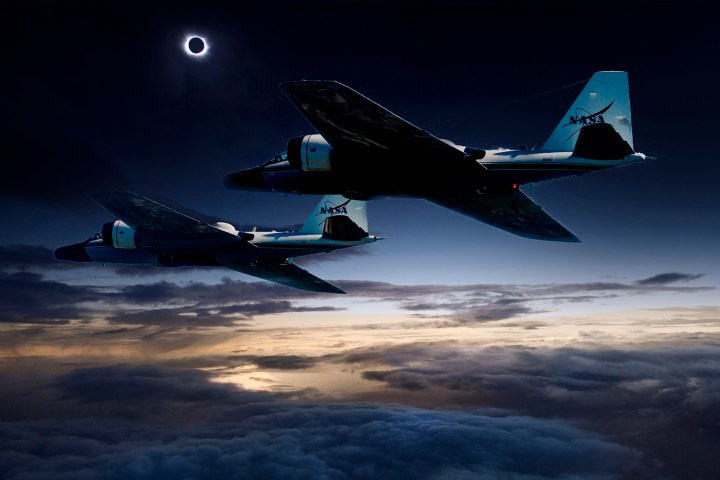
By following the eclipse via jet, the team will extend their viewing time of the celestial phenomenon from less than two and a half minutes to over seven minutes. The scientists will shoot from twin telescopes, both located on the nose of the jets.
The team’s goal is to capture the details in the corona as the moon completely blocks the sun, leaving the outer atmosphere easily visible. The darkness created by the eclipse will also allow the researchers to study Mercury — the team plans to take the first thermal images of the planet during the eclipse from those same jets. Recording how fast the planet cools while the sun is covered could help scientists better understand Mercury’s make-up.
“These could well turn out to be the best ever observations of high frequency phenomena in the corona,” Dan Seaton, co-investigator of the project and researcher at the University of Colorado in Boulder, Colorado, said. “Extending the observing time and going to very high altitude might allow us to see a few events or track waves that would be essentially invisible in just two minutes of observations from the ground.”
NASA says the images could help researchers understand why the sun is so hot. While the temperatures in the corona reach the millions, lower layers such as the photosphere top out in the thousands. Gathering data from the corona during the eclipse could help the team better understand why the inner layers of the sun’s atmosphere are actually cooler than the outer layers. The images could help prove — or disprove — a theory that nano-flares, which scientists have not yet seen, accounts for the temperature differences.
The telescopic camera will be shooting high resolution images at 30 fps. By taking multiple images over time, scientists expect they could identify potential nanoflares by comparing the shots to look for motion. The images will be taken with the traditional visible light camera, while the images of Mercury will be shot in infrared to create a temperature map of the planet.
The project is just one of 11 different tasks NASA is leading during the eclipse.
Editors' Recommendations
- How to photograph April’s solar eclipse, according to NASA
- Help NASA in its quest to learn more about our sun
- NASA’s experimental electric plane takes ‘major step’ toward first flight
- NASA’s Ingenuity helicopter sets new flight records on Mars
- NASA sets new date for first launchpad test of its mega moon rocket




